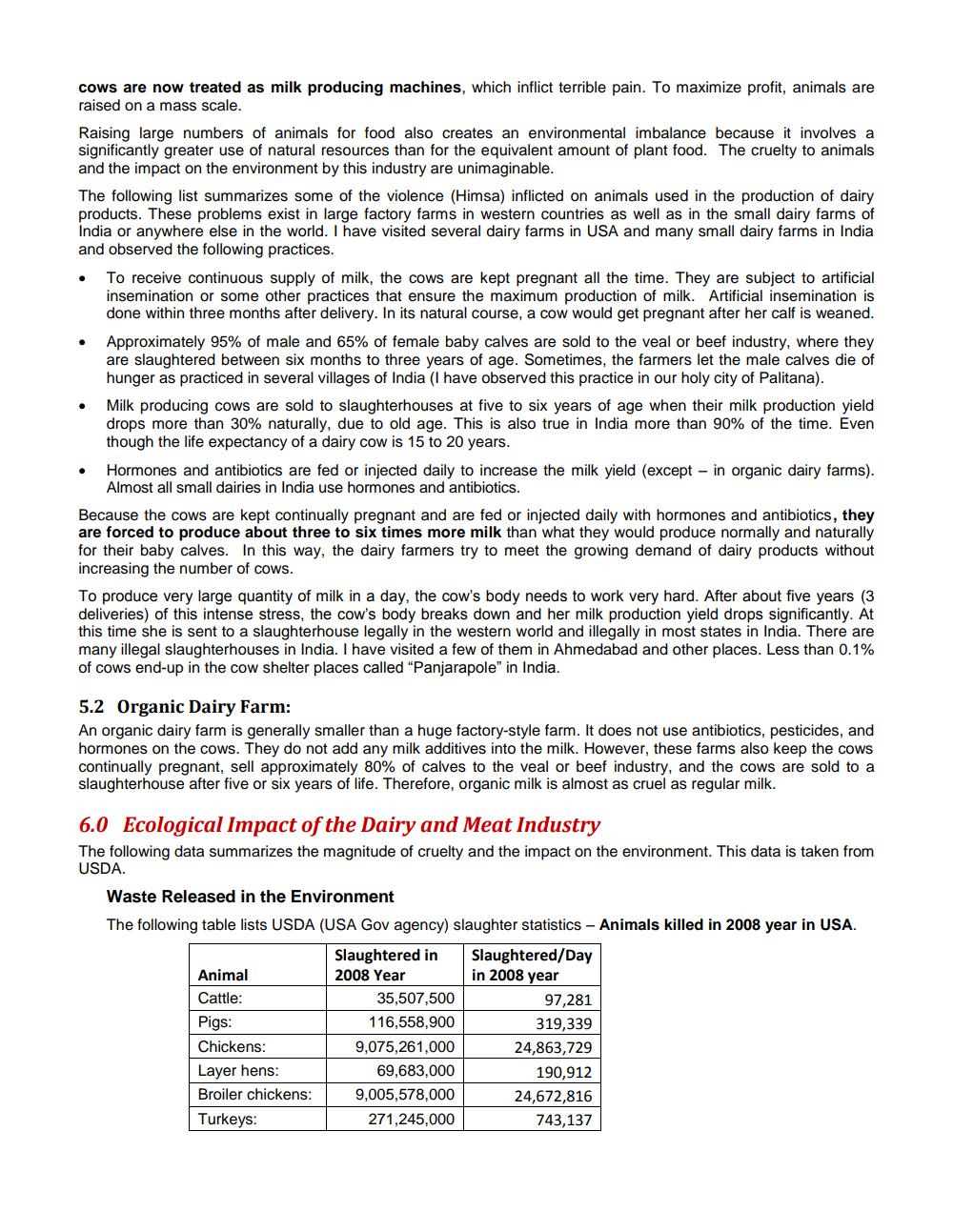Book Title: Contemporary Jain Way of Compassionate Living V1 Author(s): Pravin K Shah Publisher: JAINA Education Committee View full book textPage 4
________________ cows are now treated as milk producing machines, which inflict terrible pain. To maximize profit, animals are raised on a mass scale. Raising large numbers of animals for food also creates an environmental imbalance because it involves a significantly greater use of natural resources than for the equivalent amount of plant food. The cruelty to animals and the impact on the environment by this industry are unimaginable. The following list summarizes some of the violence (Himsa) inflicted on animals used in the production of dairy products. These problems exist in large factory farms in western countries as well as in the small dairy farms of India or anywhere else in the world. I have visited several dairy farms in USA and many small dairy farms in India and observed the following practices. • To receive continuous supply of milk, the cows are kept pregnant all the time. They are subject to artificial insemination or some other practices that ensure the maximum production of milk. Artificial insemination is done within three months after delivery. In its natural course, a cow would get pregnant after her calf is weaned. Approximately 95% of male and 65% of female baby calves are sold to the veal or beef industry, where they are slaughtered between six months to three years of age. Sometimes, the farmers let the male calves die of hunger as practiced in several villages of India (I have observed this practice in our holy city of Palitana). • • Milk producing cows are sold to slaughterhouses at five to six years of age when their milk production yield drops more than 30% naturally, due to old age. This is also true in India more than 90% of the time. Even though the life expectancy of a dairy cow is 15 to 20 years. Hormones and antibiotics are fed or injected daily to increase the milk yield (except - in organic dairy farms). Almost all small dairies in India use hormones and antibiotics. Because the cows are kept continually pregnant and are fed or injected daily with hormones and antibiotics, they are forced to produce about three to six times more milk than what they would produce normally and naturally for their baby calves. In this way, the dairy farmers try to meet the growing demand of dairy products without increasing the number of cows. To produce very large quantity of milk in a day, the cow's body needs to work very hard. After about five years (3 deliveries) of this intense stress, the cow's body breaks down and her milk production yield drops significantly. At this time she is sent to a slaughterhouse legally in the western world and illegally in most states in India. There are many illegal slaughterhouses in India. I have visited a few of them in Ahmedabad and other places. Less than 0.1% of cows end-up in the cow shelter places called "Panjarapole" in India. 5.2 Organic Dairy Farm: An organic dairy farm is generally smaller than a huge factory-style farm. It does not use antibiotics, pesticides, and hormones on the cows. They do not add any milk additives into the milk. However, these farms also keep the cows continually pregnant, sell approximately 80% of calves to the veal or beef industry, and the cows are sold to a slaughterhouse after five or six years of life. Therefore, organic milk is almost as cruel as regular milk. 6.0 Ecological Impact of the Dairy and Meat Industry The following data summarizes the magnitude of cruelty and the impact on the environment. This data is taken from USDA. Waste Released in the Environment The following table lists USDA (USA Gov agency) slaughter statistics - Animals killed in 2008 year in USA. Slaughtered in 2008 Year Animal Cattle: Pigs: Chickens: Layer hens: Broiler chickens: Turkeys: 35,507,500 116,558,900 9,075,261,000 69,683,000 9,005,578,000 271,245,000 Slaughtered/Day in 2008 year 97,281 319,339 24,863,729 190,912 24,672,816 743,137Page Navigation
1 2 3 4 5 6
